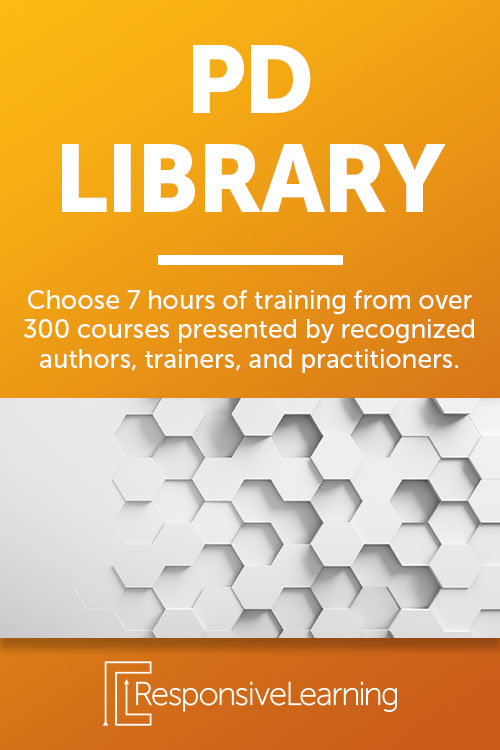Do you remember struggling with a particular subject when you were in school? How did your teacher help you to overcome the issue so you were able to learn and apply your knowledge? With Keys to Special Education – Instructional Strategies, you’ll understand how to become better equipped with the tools needed to help your students who are having difficulty learning.
1. UDL for All
The Universal Design for Learning (UDL) creates clear goals with flexibility for every student. Before you begin a lesson, you’ll want to ensure that it’s aligned with state standards for what your students should know at the end. This will help you access prior knowledge, review outcomes, and show your students rubrics or examples so they understand what is expected of them.
UDL enables you to use different methods and materials for all of your students’ needs. You should provide multiple learning options during your lessons, such as teacher instruction, digital tools, and collaboration. Keep in mind that students in special education should have access to assistive technology as well.
During your lesson, you can conduct UDL with a continuous monitoring process. This will help your students follow a cycle of self-reflection, setting goals, progress monitoring, and making choices. You should guide your students to make changes to optimize their practice and learning strategies. UDL allows you to offer challenges for all students to make meaningful progress while providing support as needed.
2. Individual SDI
Specially Designed Instruction (SDI) enables students with disabilities to have a unique set of supports that help them learn. Special education teacher Ayo Jones explains how you can use SDI to set your students up for success. She is a veteran educator, author, and founder of Noodle Nook – an online resource for teachers in special education.
Jones reminds us, “When a plant doesn’t grow, we treat the soil, not the seed.” The same approach should be considered when you deliver instruction to a student with disabilities or learning challenges. This includes making meaningful accommodations, modifications, using assistive technology, supplemental aids, and setting alterations. What can you do to best accommodate their individual needs?

3. High-Yield Instruction
Differentiation is a high-yield instructional strategy that creates a richer learning environment for all students. It involves reviewing IEP content and considering the best ways to implement instruction, based on how each student learns information. For example, they might benefit from scaffolding or more hands-on learning opportunities.
When you differentiate the product, you’ll want to understand how a student demonstrates learning. This includes their specific learning style, giving opportunities for choice as well as authentic activities and assessments. Consider how your learning environment impacts students’ success in the classroom. Are there adjustments you can make to improve their learning, such as room arrangement or group interactions?
4. Intensive Intervention
You can target the specific needs of struggling students by providing a variety of interventions. These include the Multi-Tiered System of Support (MTSS), Response to Intervention (RTI), and Positive Behavior Intervention and Supports programming (PBIS). Remember, every student learns differently, but with the proper interventions and support you can help them achieve their educational goals.
Interested in learning more about how you can help your struggling students grow? Explore the course demo on Keys to Special Education – Instructional Strategies today!

